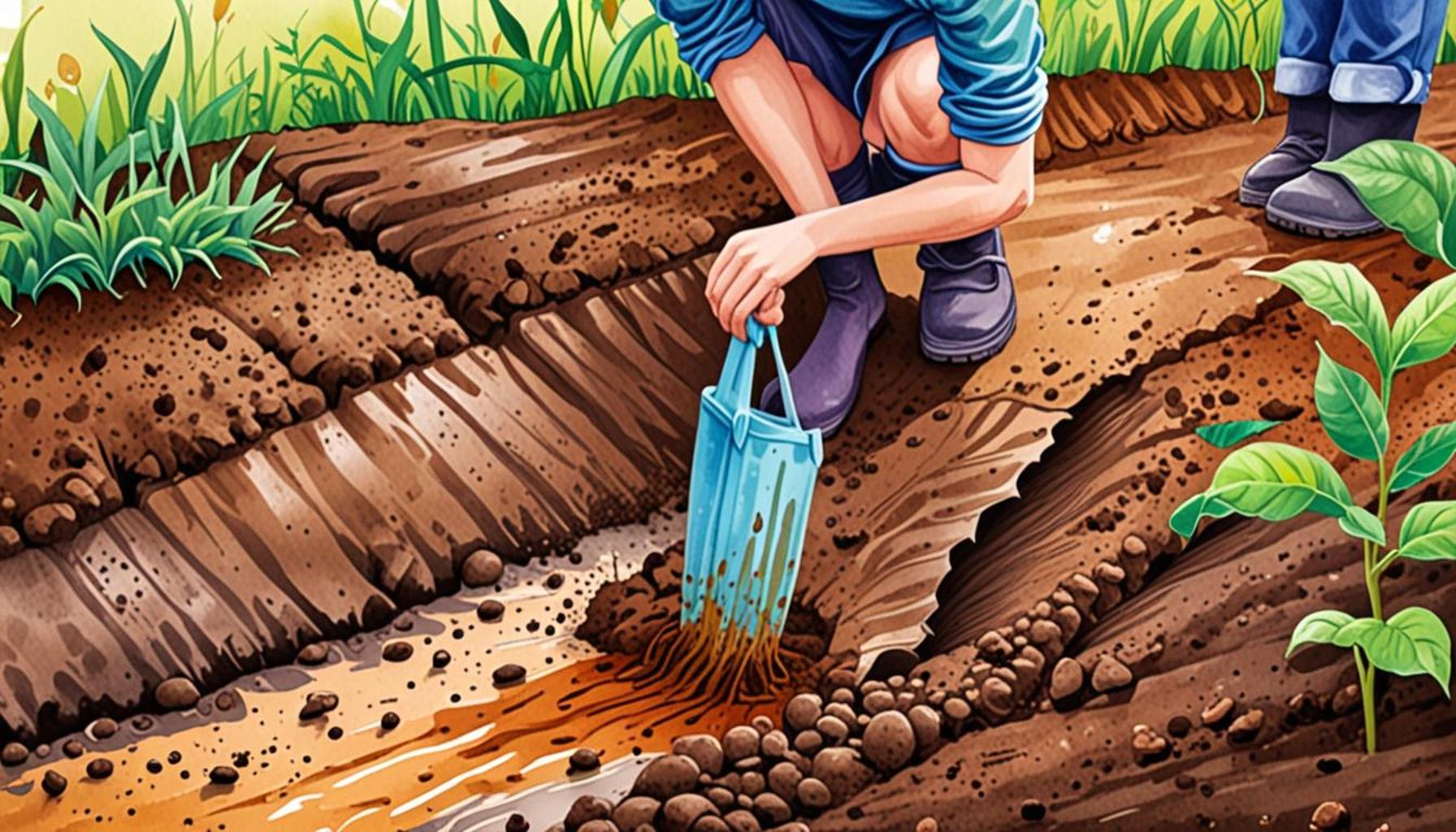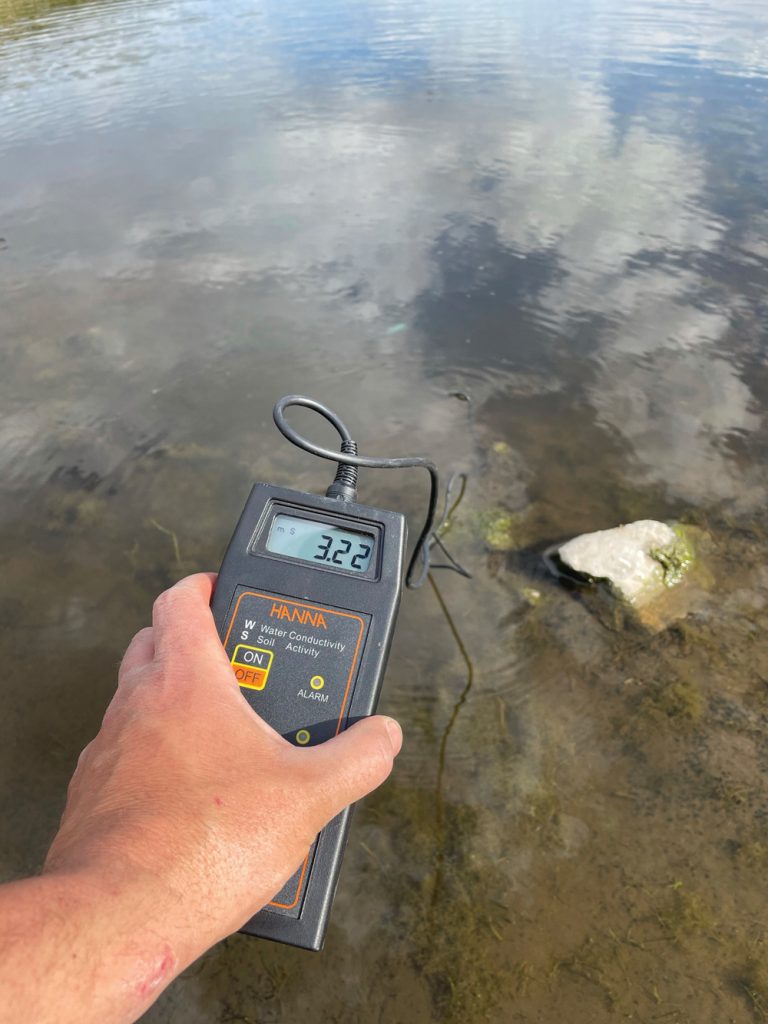The Role of Drainage in Soil Preparation: Strategies for Beginners

The Foundation of a Thriving Garden
The health of your garden or farm starts with effective soil preparation. One vital aspect often overlooked by beginners is drainage. Proper drainage not only optimizes soil quality but also promotes healthy plant growth, allowing your plants to flourish in a conducive environment. Without sufficient drainage, water can accumulate, leading to a host of issues that can jeopardize your gardening efforts.
The Benefits of Good Drainage
Effective drainage contributes to multiple soil and plant advantages, playing a critical role in maintaining the overall health of your garden:
- Prevents Waterlogging: One of the most significant benefits of good drainage is its ability to prevent waterlogging. Waterlogged soil can become saturated, depriving plant roots of essential air and leading to conditions favorable for diseases like root rot. Plants with waterlogged roots often exhibit yellowing leaves and stunted growth.
- Enhances Nutrient Absorption: When excess water is drained away, nutrients in the soil become more accessible to plants. This means that essential elements such as nitrogen, phosphorus, and potassium can be absorbed effectively, promoting healthy growth. In contrast, waterlogged conditions can wash away these vital nutrients, leaving plants starved for what they need to thrive.
- Promotes Aeration: Good drainage allows for better aeration of the soil, which is crucial for root development. It ensures that roots receive adequate oxygen, an essential element for respiration and energy production in plants. Without sufficient oxygen, roots can suffocate, leading to poor growth or even plant death.
In the United States, poor drainage can lead to significant agricultural challenges that vary by region. For example:
- Heavy Clay Soils: In areas with clay-rich soil, the dense composition can impede water drainage. Gardeners in these regions might need to amend the soil with organic matter or implement raised beds to improve drainage.
- Wet Environments: Regions like the Pacific Northwest, known for their wet climates, are at an increased risk of fungal diseases such as root rot and powdery mildew due to poorly drained soils. Utilizing techniques such as drip irrigation or planting on mounds can help mitigate these risks.
- Coastal Areas: Coastal regions face uncertainties such as saltwater infiltration during storms, which can harm plant life. Here, specialized drainage solutions like trench drains may be essential to protect valuable crops from salinity damage.
Strategizing for Success
Understanding the role of drainage in soil preparation is crucial for beginners looking to establish their gardens. This article will explore effective strategies for improving drainage, ensuring your soil is primed for optimal growth. Techniques such as installing French drains, incorporating sand or compost into the soil, and establishing proper grading can significantly enhance drainage.
Furthermore, regular monitoring and maintenance of your drainage systems are essential. Simple practices like clearing debris from drain lines and observing rainfall patterns can help you anticipate and address drainage issues promptly. By taking these steps, you can create an environment conducive to flourishing gardens, paving the way for gardening success.

DISCOVER MORE: Click here for natural pest control tips
Understanding Drainage Techniques
For beginners venturing into the world of gardening, grasping the fundamentals of drainage is essential. As the soil serves as the bedrock for plant life, knowing how to manage its moisture levels effectively can make the difference between a flourishing garden and a disappointing crop. Implementing proper drainage strategies will help you overcome common challenges associated with poor soil management.
Drainage Strategies to Consider
To facilitate a healthy soil environment, here are several practical drainage techniques that beginners can experiment with:
- French Drains: This popular method involves creating ditches lined with gravel or perforated pipes that redirect water away from saturated areas. By sloping the drain away from the garden, you can improve the overall drainage of your soil while protecting your plants from excessive moisture.
- Raised Beds: Constructing raised garden beds is an effective way to promote drainage, particularly in heavy clay soils. These elevated structures prevent water from pooling around plant roots, allowing for better aeration and helping to keep soil temperature stable. In addition, they can create a microclimate, further enhancing growth conditions.
- Soil Amendments: Incorporating materials such as coarse sand, peat moss, or organic compost into your garden soil can enhance drainage. These amendments increase soil porosity, allowing excess water to move freely and promoting a healthier nutrient exchange. Moreover, they contribute to maintaining soil structure and fertility.
- Proper Grading: Before planting, assess your garden’s slope and grade. Ensuring that the land directs water flow away from planting areas can significantly reduce waterlogging. This can be achieved by leveling uneven ground, creating slopes, or even installing drainage channels to divert water away effectively.
Each of these strategies has unique advantages tailored to specific challenges. For instance, gardeners in the Northeast, where clay soils are common, might prioritize raised beds combined with soil amendments, while those in wetter regions might benefit from properly installed French drains.
Monitoring and Maintenance
Implementing drainage solutions is just the beginning; regular monitoring and maintenance are vital for long-term success. Beginners should observe the performance of their drainage systems after heavy rainfall, ensuring that water moves through the soil as intended. Keeping an eye on plant health can also offer clues—yellowing leaves or wilting plants might indicate drainage problems that need to be addressed promptly.
Additionally, routine maintenance such as clearing obstructions from drain lines and ensuring the drainage systems remain functional will pay off immensely in the growing season. By adopting these strategies, beginners can create a robust foundation for their gardens, leading to bountiful harvests and vibrant landscapes.
The Importance of Effective Drainage in Soil Preparation
When venturing into gardening or agricultural practices, proper soil preparation is essential for healthy plant growth. A significant aspect often overlooked by beginners is the role of drainage. Effective drainage contributes to maintaining the right moisture levels, preventing waterlogging, and promoting healthy root development. Not all soils drain the same way; understanding your soil type can be crucial in selecting the appropriate strategies for drainage.
Understanding Soil Types
Different soil types have distinct drainage characteristics. Sandy soils typically allow for fast drainage, while clay soils can retain water, leading to potential drainage issues. Beginners should familiarize themselves with their local soil types and their behavior during varying weather conditions. For instance, heavy rainfall could lead to saturated clay soil, damaging plant roots and hampering growth.
Implementing Drainage Strategies
There are several strategies to enhance soil drainage. One effective method is the incorporation of organic matter, such as compost, which can improve moisture retention while promoting aeration. Additionally, constructing raised beds can allow excess water to drain away, creating an environment more conducive to plant health.Another practical approach is to install drainage tiles or pipes. These can help redirect excess water away from critical growing areas, ensuring that roots remain healthy and free from rot. For beginners, these strategies may seem daunting, but they are integral for successful gardening.
The Benefits of Adequate Drainage
The advantages of implementing effective drainage strategies are extensive. Proper drainage helps in improving soil structure, facilitates nutrient absorption, and enhances microbial activity, which are all vital for plant health. Furthermore, it reduces the risk of diseases that thrive in waterlogged conditions, like root rot and fungal infections. By investing time in understanding and creating a robust drainage plan, beginners can set their gardens up for success right from the start. This not only fosters a healthier plant ecosystem but also maximizes overall yield, proving that effective drainage is indeed a cornerstone of successful soil preparation.
EXPLORE MORE: Click here to discover how to grow your own medicinal plants
Advanced Drainage Solutions for Optimal Soil Health
While the fundamental drainage strategies previously discussed lay a solid groundwork for soil preparation, beginners might also find value in exploring more advanced methods. These solutions not only help mitigate excess water but also enhance overall soil health—an essential factor that can lead to thriving gardens.
Incorporating Bioengineering Techniques
Bioengineering techniques are revolutionizing the approach to garden drainage. One noteworthy method involves employing living shorelines or vegetative buffers, which utilize native plants to stabilize soil and absorb excess water. This approach not only fosters drainage but also promotes biodiversity and helps combat soil erosion. For beginners, choosing drought-resistant and water-absorbing plants, like switchgrass, can establish a vibrant, healthy landscape while naturally managing moisture levels.
Utilizing Permeable Paving
Another technique to consider is using permeable paving for walkways, driveways, or patio areas within the garden. Traditional paving materials often lead to surface runoff and ponding, but permeable options allow water to pass through and infiltrate the earth below. This encourages groundwater recharge while simultaneously controlling draining issues. For those in urban areas, permeable concrete or porous bricks can transform hardscapes into functional landscapes that contribute to overall site drainage.
Subsurface Drainage Systems
For gardeners facing persistent saturation challenges, installing subsurface drainage systems might be the answer. These systems consist of pipes buried below the soil surface, facilitating the movement of excess water to designated drainage areas. By adjusting their depth and layout, you can effectively manage the water table and safeguard roots. When considering this option, it’s essential to conduct proper soil tests to determine the right depth. Local experts or cooperative extension services can provide tailored advice based on specific soil types.
Exploring Natural Solutions Through Indigenous Practices
Digging into the history of gardening often unveils solutions embodied in traditional practices. Indigenous gardening techniques often emphasize the importance of swales—shallow trenches designed to catch and redirect water. By contouring your garden to include swales, you can capture run-off rainwater effectively and minimize soil erosion while promoting infiltration. Learning from the past enriches modern gardening and reassures new gardeners that effective, sustainable practices exist.
The Role of Technology in Soil Drainage
In this digital age, technology is poised to revolutionize the management of garden drainage. Utilizing soil moisture sensors can help gauge the moisture levels accurately, allowing gardeners to optimize watering schedules and better manage drainage. More advanced systems integrate with smart home technology, delivering real-time data directly to your smartphone—empowering beginners to make informed decisions about their gardening practices.
As you experiment with these advanced drainage solutions, it’s important to recognize that each strategy should serve the specific needs of your garden. A tailored approach based on your soil type, climate, and plant selection will lead to the most effective outcomes, ensuring that your gardening journey is both successful and enjoyable.
DIVE DEEPER: Click here to discover different soil types
Conclusion: Embracing Effective Drainage for Successful Gardening
The journey toward successful gardening begins with understanding the pivotal role of drainage in soil preparation. By implementing fundamental strategies such as improving soil structure and utilizing organic matter, beginners can lay a robust foundation for their gardens. However, as this article highlights, the exploration of advanced drainage solutions offers valuable opportunities to enhance soil health and flora vitality.
From adopting innovative bioengineering techniques that focus on sustainability, to incorporating permeable paving that aids in groundwater recharge, each method provides unique benefits. For gardeners grappling with persistent saturation, establishing subsurface drainage systems or incorporating swales from indigenous practices can transform challenging landscapes into thriving ecosystems. Additionally, harnessing the power of modern technology through moisture sensors allows for informed decision-making, ensuring that you maintain optimal conditions for your plants.
Ultimately, the effectiveness of drainage methods hinges on customizing approaches to suit your garden’s particular needs. As new gardeners venture into this exciting realm, the knowledge gained through research and experimentation will empower them to create stunning, sustainable landscapes. The path to a flourishing garden is paved with informed choices about drainage, and by embracing these strategies, you’ll not only cultivate beauty but also contribute to the ecology of your community. Explore further, experiment boldly, and watch your gardening aspirations flourish.



